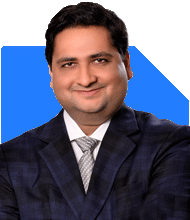Ulhas Joshi | Answer |Ask -Follow
Mutual Fund Expert - Answered on Mar 15, 2023
Prior to joining RankMF as CEO, he was vice president (sales) at IDBI Asset Management Ltd.
Joshi holds an MBA in marketing from Barkatullah University, Bhopal.... more

I’m investing in following MF’s 1. Axis Focused 25 Fund – 5000 /months and 10% yearly Step up 2. Axis Long Term Equity Fund – 5000/ month and 10% yearly Step up 3. Axis Small Cap Fund – 5000/ month and 10% yearly Step up 4. Mirae Asset Emerging Bluechip Fund – 2500/ month 5. Mirae Asset Mid Cap Fund – 5000/ month and 10% yearly step up 6. Parag Parikh Flexi Cap Fund – 5000/ month My investment horizon is 15 years , moderately high risk appetite with focus on maximum Corpus Build. Kindly advice if my portfolio needs and change.
The schemes you invest in are good schemes and you can continue investing in them. Your annual step up will help you create a larger corpus.
You may like to see similar questions and answers below
Nikunj Saraf | Answer |Ask -Follow
Mutual Funds Expert - Answered on Mar 18, 2023
Ramalingam Kalirajan |9790 Answers |Ask -Follow
Mutual Funds, Financial Planning Expert - Answered on Apr 24, 2024
Hardik Parikh | Answer |Ask -Follow
Tax, Mutual Fund Expert - Answered on Apr 20, 2023
Ramalingam Kalirajan |9790 Answers |Ask -Follow
Mutual Funds, Financial Planning Expert - Answered on Apr 12, 2024
Dr Nagarajan J S K |1943 Answers |Ask -Follow
NEET, Medical, Pharmacy Careers - Answered on Jul 20, 2025
Dr Nagarajan J S K |1943 Answers |Ask -Follow
NEET, Medical, Pharmacy Careers - Answered on Jul 20, 2025
Nayagam P P |9162 Answers |Ask -Follow
Career Counsellor - Answered on Jul 20, 2025
Dr Nagarajan J S K |1943 Answers |Ask -Follow
NEET, Medical, Pharmacy Careers - Answered on Jul 20, 2025
Nayagam P P |9162 Answers |Ask -Follow
Career Counsellor - Answered on Jul 20, 2025
Dr Nagarajan J S K |1943 Answers |Ask -Follow
NEET, Medical, Pharmacy Careers - Answered on Jul 20, 2025
Nayagam P P |9162 Answers |Ask -Follow
Career Counsellor - Answered on Jul 20, 2025
Nayagam P P |9162 Answers |Ask -Follow
Career Counsellor - Answered on Jul 20, 2025
Nayagam P P |9162 Answers |Ask -Follow
Career Counsellor - Answered on Jul 20, 2025
Nayagam P P |9162 Answers |Ask -Follow
Career Counsellor - Answered on Jul 20, 2025












.jpg)










